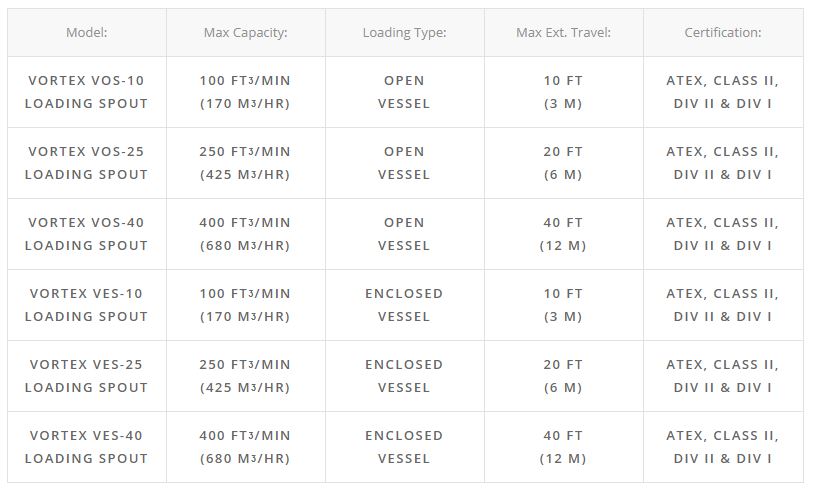
Client:
Quantity:
Size:
Application:
The loading of bulk materials into trucks, railcars, barges, ships or stockpiles is fraught with health, safety and environmental issues. Dust emissions in bulk loading terminals can lead to respiration problems for employees, cause slip hazards in the workplace, propagate a potentially explosive atmosphere, and contaminate local waterways and neighbourhoods.
When material is discharged in mass flow, dust becomes airborne due to impact forces, air entrainment and friction between material particles. This is exasperated by the displacement of air within vessels, which often creates clouds of unmanageable dust in the loading area.
Over the decades, more strict regulation has forced companies to find solutions for decreasing or eliminating the presence of fugitive dust in loading processes.
There are many methods currently used across industries to reduce dust emissions. The following are the most common practices used in manufacturing processes today:
1. Loading “Socks”
A cylindrical tube of fabric sewn to be tapered – much like that of a windsock. Made from canvas or polyurethane fabric.

2. Telescopic Chutes
A tube-in-tube chute that travels downward to load, and upward to clear the transport vessel. Made from metal.

3. Dust Suppression Hoppers
A hopper that attempts to lessen the agitation of particles, in order to reduce dust.

4. Cascading Chutes
Designed with angled “cones” to reduce the velocity of material flow, thus reducing frictional forces and material impact.
These methods can be effective in limited applications, but all fail to address the primary cause of fugitive dust.

Managing Displaced Air and Dust
In the loading process, the extraction of displaced air is key to dust management. Vortex’s loading equipment is specifically designed to control this problematic mixture of air and dust, addressing the health, safety, and environmental issues faced by the industry.
Vortex’s retractable Loading Solutions are designed per the demands of each application and address air displacement at the source. In enclosed applications, such as railcar or truck loading, the Vortex design seals off the vessel’s loading hatch, and is equipped with a filter to guarantee dust-free loading by means of a vacuum. The displaced air and dust mixture is then aspirated out of the enclosed vessel via an in-line filter, allowing the dust to be reintroduced into the material flow. This creates a completely closed cycle, which minimizes material loss.
This approach can also be used in “open” loading circumstances where material is being filled into an open vessel, such as a truck bed, railcar, barge, or stockpiled on the ground. This is achieved by attaching a dust skirt at the outlet of the spout, which rests over top of the product pile and seals the vacuum pull as the spout dumps.
Another benefit to the Vortex design is its flexibility and scalability. It can be used to handle a wide variety of abrasive and non-abrasive powder, pellet, or granular materials by modifying spout construction materials and tolerances. Certain configurations can even be suitable for food handling! Capacity requirements can be addressed by correct sizing.
Below is a table to address the technical parameters of each model:

* In cases where capacity exceeds 400 ftᶾ/min (680 mᶾ/hr), Vortex has larger engineered loading spouts with throughputs exceeding 2,500 ftᶾ/min (4,250 mᶾ/hr). In certain cases, the Vortex spout’s base design may need to be slightly altered to a telescopic tube configuration, with a multistage filter near the outlet of the spout.
Concerns for Dust Emissions in Bulk Loading
Controlling dust at loading terminals is a critical concern for many companies. Acquiring equipment that does not manage displaced air and dust can lead to costly and prolonged health, safety, and environmental issues.













